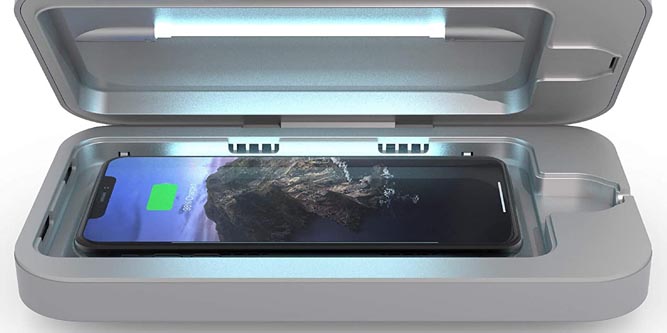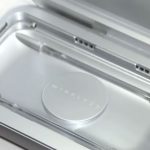These days, you can’t be too careful about keeping your environment clean. Typically, when you think of cleaning, you think of surfaces other people touch. You think about grocery cart handles, elevator buttons, and ATM PIN pads. But your own personal belongings could stand to be cleaned regularly as well. Unless your hygiene game is 100 percent perfect, you’re touching your phone with dirty hands at some point. If nothing else, if you’re like most people, you almost certainly use your smartphone on the toilet. Do you really want to put that dirty surface right up to your face, less than an inch from your mouth?
UV sterilization is an easy, convenient way to keep your phone as germ-free as possible. It’s a relatively hands-off method, and you can easily clean your phone multiple times per day. PhoneSoap is a leading manufacturer in the UV sterilization business. In the past, we’ve reviewed their PhoneSoap Pro, the smaller PhoneSoap Go, and the jumbo-sized HomeSoap. Today, we’ll be reviewing their new PhoneSoap Wireless. This PhoneSoap variant is similar to the PhoneSoap Pro, but has a smaller profile and offers Qi wireless charging. But how well does it stack up to the competition? Let’s take a deep dive into the PhoneSoap Wireless’ features, and see if it’s worth your hard-earned cash!
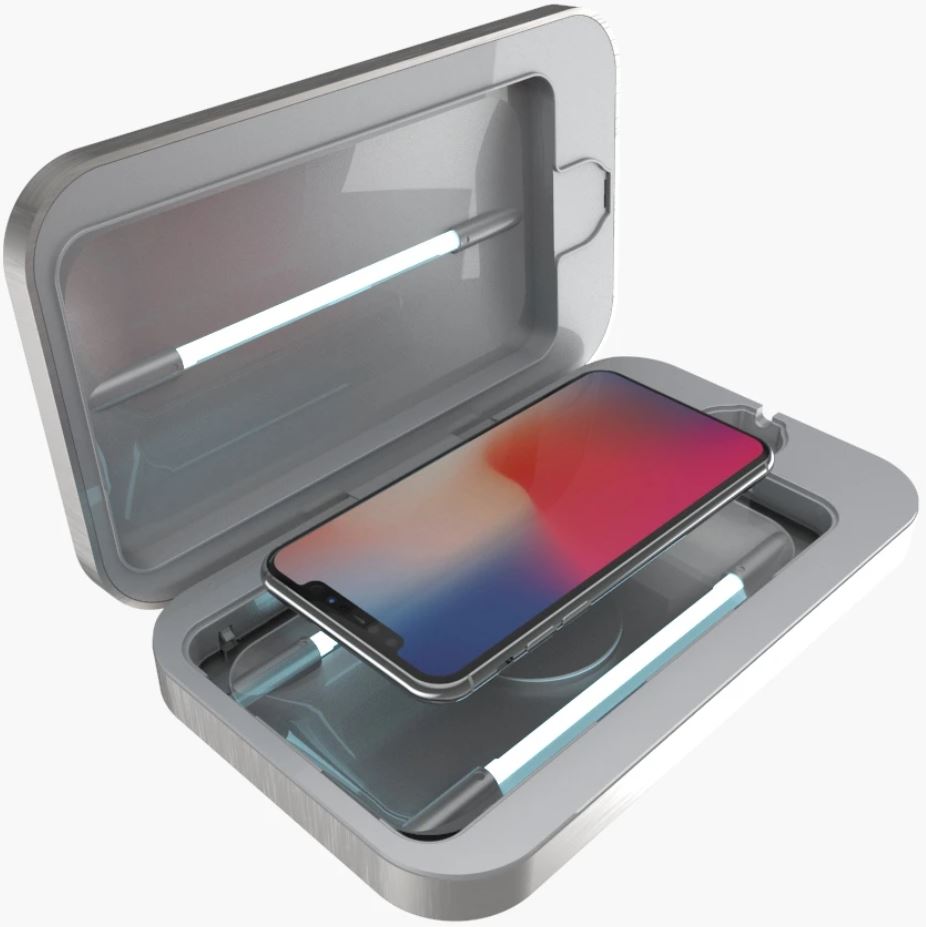
How Do UV Sanitizers Work?
So, a UV sanitizer kills germs, but how does it actually work? In the past, UV sanitizers have mostly been limited to hospitals. As a result, many people are unfamiliar with how they work and what features you should look for. To use one example, many people believe that any old UV black light will kill germs. This is absolutely, positively not true. A black light might make some paints glow, but it doesn’t kill germs. It doesn’t have enough energy. To reliably kill germs, you need light with a wavelength between 100 and 280 nanometers. This type of light is called Ultraviolet Type-C radiation, or UV-C for short. It’s energetic enough to break down DNA and RNA molecules inside viruses and living cells, killing them.
You might have notice that we said “viruses and living cells”, not “germs”. That’s right. A UV-C sterilization light can kill human cells as easily as it kills viruses and bacteria. At low levels of exposure, this causes sunburn. At higher levels of exposure, you can actually develop skin cancer. This leads to one of the benefits of an enclosed UV sanitizer: the bulbs are located on the inside. Since the bulbs will only light up while the lid is closed, you don’t have to worry about exposing your skin.
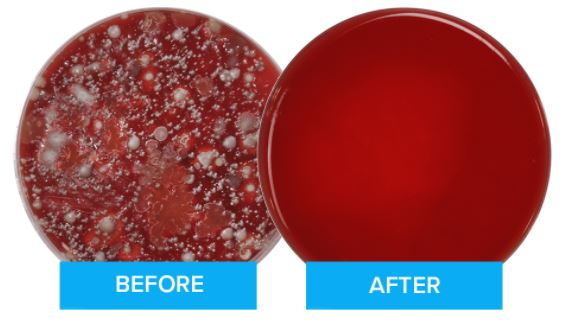
You also don’t have to worry about exposure time. The sanitizer will automatically light up your phone for the right amount of time, ensuring that the job gets done. In a well-engineered enclosure, you also get 360 degrees of exposure. Your entire phone will be covered, so you don’t have to worry about missing a spot. If you’re concerned that your sanitizer doesn’t run long enough, just run a second cycle. Outside of wasting a penny’s worth of electricity, it can’t hurt anything.
That said, UV sanitizing enclosures do have a notable drawback. If something won’t fit inside the enclosure, you can’t sanitize it. For example, you can use a smartphone sanitizer on your car keys, but you can’t use it on your keyboard. For that, you’d need a germicidal UV light wand. These wands can be used on any non-porous surface, but be sure to read the instructions. You need to ensure the right exposure time, and hold the wand the right distance from the surface you’re sanitizing. We should also point out that UV light wands are not suitable for pets or house plants. Remember, UV-C light will damage any living cells. This includes your dog and your favorite orchid.
Before we move on to discussing the PhoneSoap Wireless, we should talk about one more thing: effectiveness. Most UV sanitizers, including the PhoneSoap Wireless, advertise an effectiveness of 99.9 or 99.99 percent. Why aren’t they 100 percent effective? The answer is that when used correctly, they more or less are. Unfortunately, there are hundreds of thousands of bacteria and billions of viruses on an average smartphone. There’s simply no way to guarantee that every single one of those germs has been killed. You’ll notice that Lysol and other home cleaning products make a similar claim. For all intents and purposes, you’re getting total sterilization.
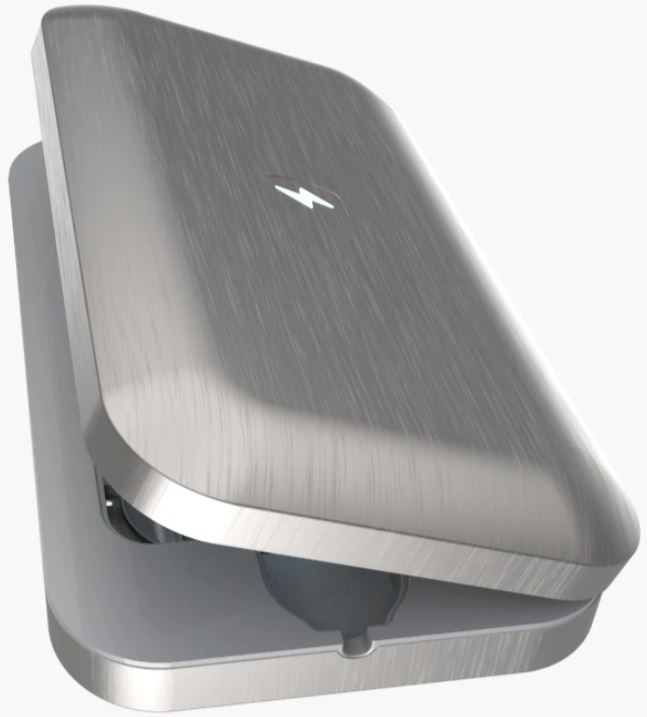
Overall Design
At first glance, the PhoneSoap Wireless could easily be confused for the PhoneSoap Pro. The design is virtually identical, with a rectangular form factor, beveled edges, and rounded corners. This form factor keeps the PhoneSoap Wireless as spacious as possible while minimizing the overall footprint. The overall dimensions are 8.5 inches long, 5 inches wide, and 1.76 inches thick. The inner compartment measures 6.8 inches long 3.74 inches wide, and 0.78 inches tall. This is only about a third of an inch less than the PhoneSoap Pro, so confusing the two would be forgivable.
The outer housing is constructed from molded plastic with an easy-to-clean satin finish. There are two color options: white and gunmetal grey. You’ll be able to match most décor schemes with these colors, although a black option would have been nice. On the top lid, you’ll see a small lightning bolt symbol. This symbol lights up blue when the sanitizer is active, so you know everything is working correctly. It also turns off when sanitizing is complete, so you know you can take your phone out.

On the back of the housing, beneath the hinge, there’s a USB port on the left hand side. On the right side, there’s a round power port for the barrel-style AC adapter. The AC adapter is included in the kit, and has a slim design that won’t overcrowd a power strip.
The inside of the PhoneSoap Wireless is mostly grey, with three barrel-shaped UV bulbs. Two bulbs are housed in the bottom, spaced towards the sides, while the top bulb is located in the center. This spacing ensures 360-degree coverage of your smartphone, although you still need to exercise common sense. If your phone case is touching the sides of the inner compartment, you won’t be getting full coverage. That said, the inner compartment is roomy enough for almost any smartphone. Moreover, both the top and bottom UV bulbs are protected by thick transparent polymer, further improving safety.
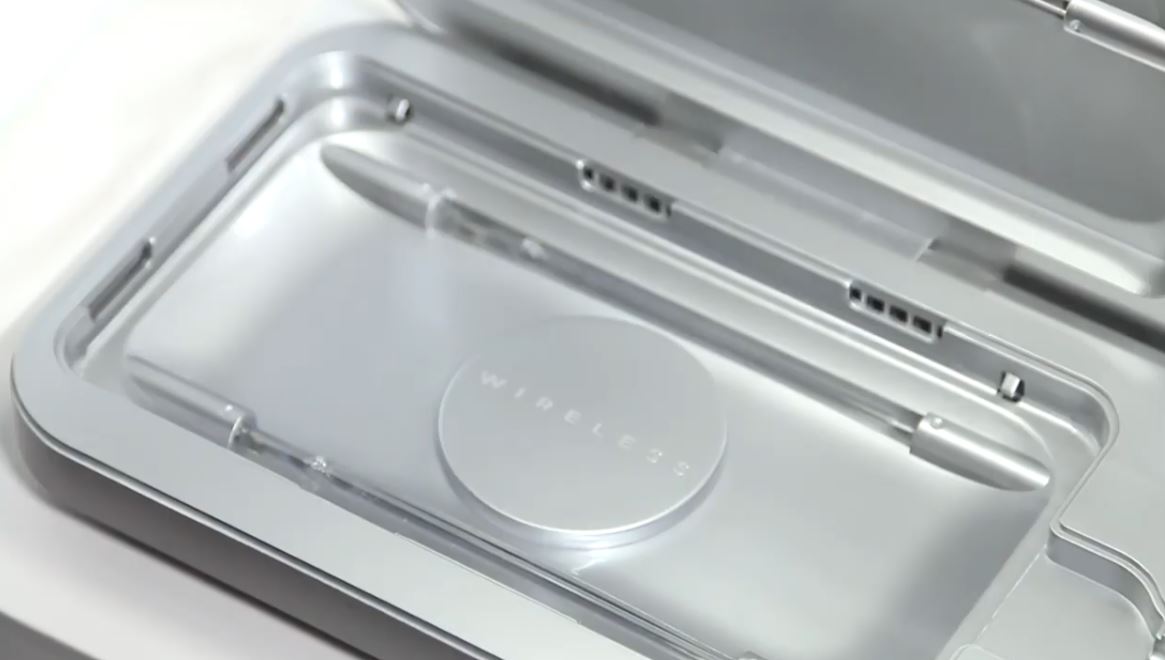
Everyday Use
Using the PhoneSoap Wireless is easy. Simply open the lid, set your smartphone inside, and close the lid again. A sanitizing cycle will automatically begin, so there’s no need to push any buttons. Once the blue indicator light turns on, you can walk away and go about your business. When the light turns off, your phone is ready to go. During a complete sanitizing cycle, the UV bulbs will kill 99.99 percent of viruses and bacteria.
The PhoneSoap Wireless isn’t going to hold your phone hostage, either. If it starts ringing during a cycle, you can safely open the lid and the UV bulbs will automatically turn off. Keep in mind, though, that you won’t get full sanitization without running a full cycle. When you’re done with your phone call, it’s a good idea to run a complete cleaning cycle.

The biggest difference between the PhoneSoap Wireless and the PhoneSoap Pro is the charging capability. The Pro featured a channel for your charging cable, along with a USB port on the back for power. This made it compatible with any smartphone on the market. However, it was inconvenient to run the cable.
The PhoneSoap Wireless, as its name implies, utilizes wireless Qi charging. This negates the need for a charging cable, so there’s no need to route one through a channel. Just drop your phone in and it will start charging. If your phone supports wireless charging, you’ll save a lot of time and frustration. On the downside, there’s no channel for a cable. This means that the PhoneSoap Wireless won’t charge phones that don’t support Qi charging. It’s a disappointing design choice, since it wouldn’t have hurt to keep the channel as an option.
One nice feature the PhoneSoap Wireless did keep was the USB port itself. Located on the back of the sanitizer, it allows you to charge a second device. This port might not help you charge while you’re sanitizing, but it is a nice added value nonetheless.
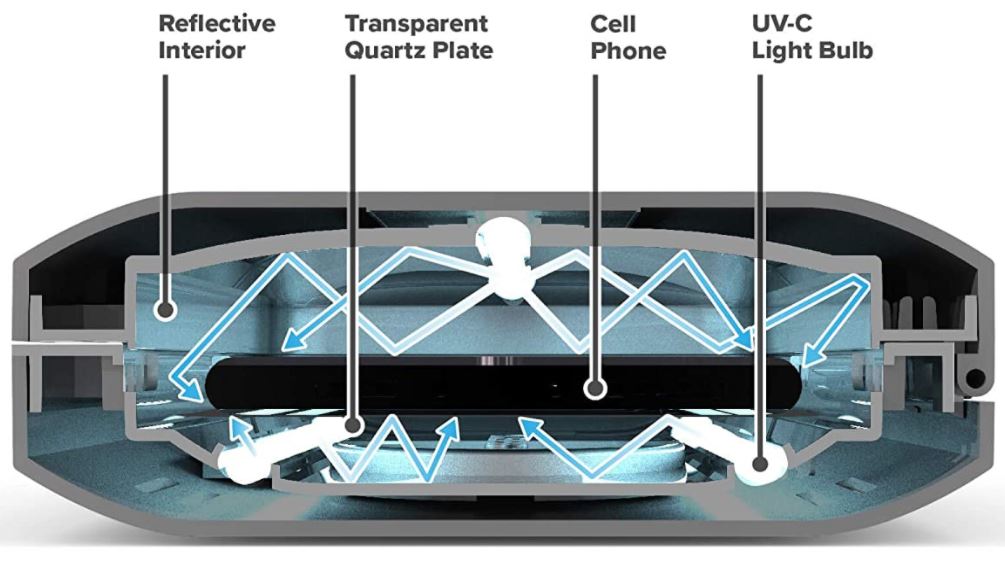
In addition to your smartphone, the PhoneSoap Wireless will sanitize anything that fits inside. If you can close the lid over it, you can clean it. This means you can clean car keys, lighters, lipstick, credit cards, and other frequently-handled objects. As long as it has a non-porous surface, it will get clean.
Final Verdict
As you can see, the PhoneSoap Wireless is a welcome upgrade to the PhoneSoap Pro. Let’s get the most obvious part out of the way: the Qi charger is a breath of fresh air. Most importantly, because it eliminates the need to run wires, it makes the sanitizer easier to use. But not only that, it also frees up space to charge an additional device. PhoneSoap wisely retained the USB port from the PhoneSoap Pro, so you can actually charge two phones. The only downside here is that there’s no channel for running a wire. If you’re using an older phone that doesn’t support Qi charging, you won’t be able to charge while sanitizing.
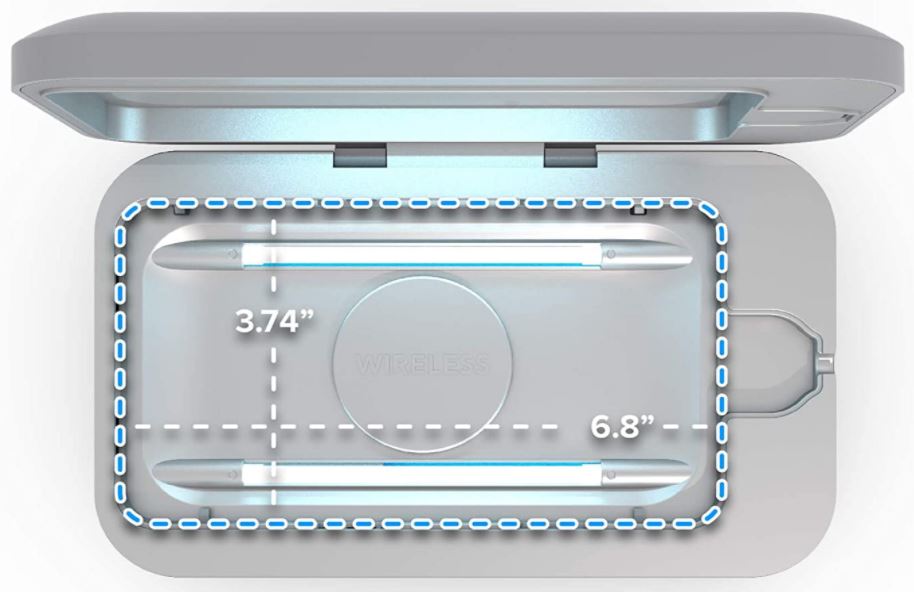
Other than that small difference, the PhoneSoap Wireless is more or less identical to the PhoneSoap Pro. This isn’t a criticism; it’s a compliment. The dimensions are about a third of an inch smaller, but this isn’t a big deal. You’ll still be able to charge any smartphone on the market. The only limitation might be longer remote controls, which stand a better chance of fitting in the Pro. But secondary uses aside, the PhoneSoap Wireless is an excellent choice for keeping your smartphone squeaky clean.
Meet Ry, “TechGuru,” a 36-year-old technology enthusiast with a deep passion for tech innovations. With extensive experience, he specializes in gaming hardware and software, and has expertise in gadgets, custom PCs, and audio.
Besides writing about tech and reviewing new products, he enjoys traveling, hiking, and photography. Committed to keeping up with the latest industry trends, he aims to guide readers in making informed tech decisions.

